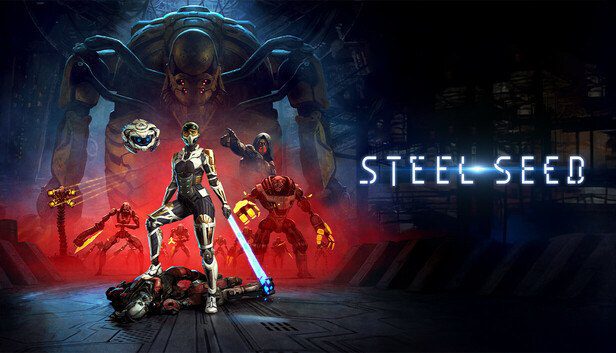Key Highlights
- Steel Seed presents itself as a sci-fi epic but is ultimately a stealth-action game cursed by mediocrity and forgettable design.
- The narrative, centered on protagonist Zoe and the survival of mankind, is flimsy and fails to provide a compelling reason to push through its 12-hour campaign.
- Gameplay heavily favors a stealth approach, as the direct combat system is clunky, unresponsive, and best avoided entirely.
- You will explore a hostile underground facility that, despite a few interesting moments, is mostly a collection of dreary and uninspired spaces.
- The world of steel seed is filled with tedious progression systems and repetitive encounters that drain any initial excitement.
Introduction
In a market saturated with sci-fi adventures, another title promising a unique world and thrilling gameplay can feel exhausting. Steel Seed is one such game. It attempts to lure you in with a cyborg ninja protagonist, Zoe, and a premise of post-apocalyptic survival. However, beneath the surface of flickering neon lights and metallic corridors lies a fundamentally flawed experience. The gameplay loop, a mix of stealth and platforming, is serviceable at best and downright frustrating at worst, making the world of steel seed a place you’ll be eager to leave.
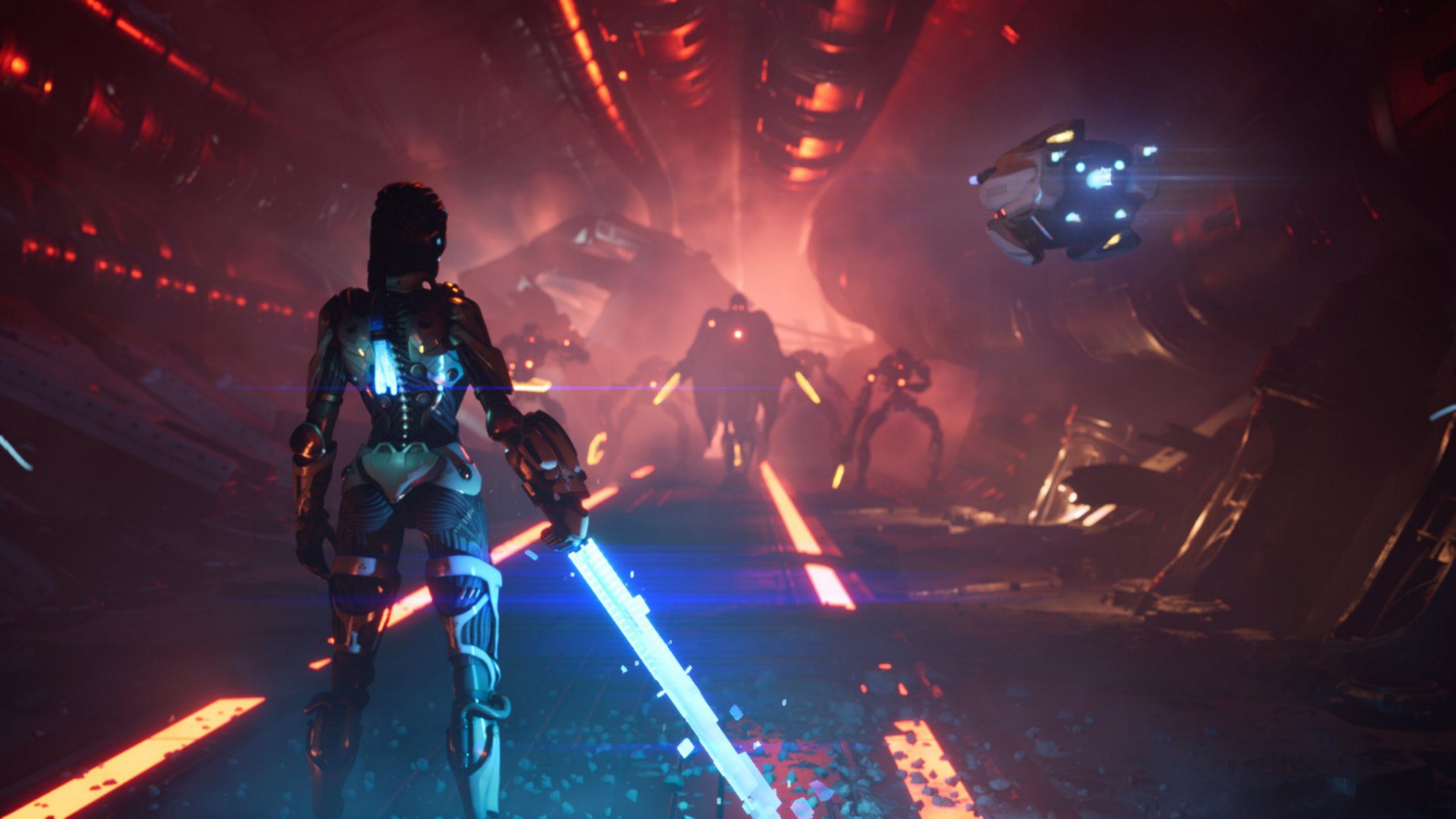
Exploring the Setting and Story of Steel Seed
The game drops you into a future where a catastrophic event has pushed humanity to the brink of extinction. You are meant to feel the weight of this world on your shoulders, but the narrative is so unremarkable and rushed that it fails to establish any meaningful connection. The stakes for the survival of mankind feel hollow from the very beginning.
Your search for answers is supposed to be guided by unique environmental storytelling, but these moments are few and far between, lost in a sea of generic design. The developer, Storm in a Teacup, has not announced any plans for DLCs or future updates. Frankly, given the state of the core game, expanding on this shaky foundation seems like a misguided effort.
Post-Cataclysm Worldbuilding and Atmosphere
Following the catastrophic event, the remnants of civilization are found within a hostile underground facility. Does this sound familiar? It should. The world of steel seed relies heavily on sci-fi tropes, presenting you with miles of generic techno-hallways and rust-chic junkyards that you’ve seen countless times before.
There are occasional flashes of creative design, with giant mechs or strange robotic creatures that hint at a more interesting world. However, these instances of unique environmental storytelling are exceptions, not the rule. They are brief sparks of creativity in an otherwise visually monotonous landscape, doing little to make you care about the survival of mankind.
The atmosphere is further undermined by questionable technical choices. Many areas are so poorly lit that navigation becomes a chore, an issue that feels less like an intentional design choice and more like a failure in lighting design. This frustrating darkness strips away any sense of immersion the game might have otherwise built.
Unraveling the Narrative – Zoe, Koby, and Their Quest
The story’s problems start with its protagonist, Zoe. Described as “awkwardly plucky and earnest,” her personality feels completely disconnected from the desolate world she inhabits. The writing relies on superhero movie-style banter and vapid self-reflection, making her less of a compelling hero and more of an annoyance you’re forced to endure.
Her flying drone companion, Koby, does little to improve the situation. The dynamic between Zoe and the drone is dull and lacks any real chemistry. Koby is your typical chipper robot sidekick, and its presence feels more like a gameplay utility than a meaningful character. Their interactions are a series of one-sided conversations that fail to build any emotional connection.
Ultimately, their quest—the search for answers about what happened to humanity—is built on a flimsy and predictable plot. The narrative twists are telegraphed miles in advance, removing any sense of surprise or intrigue. You are pushed from one objective to the next with little motivation beyond the game simply telling you to proceed.
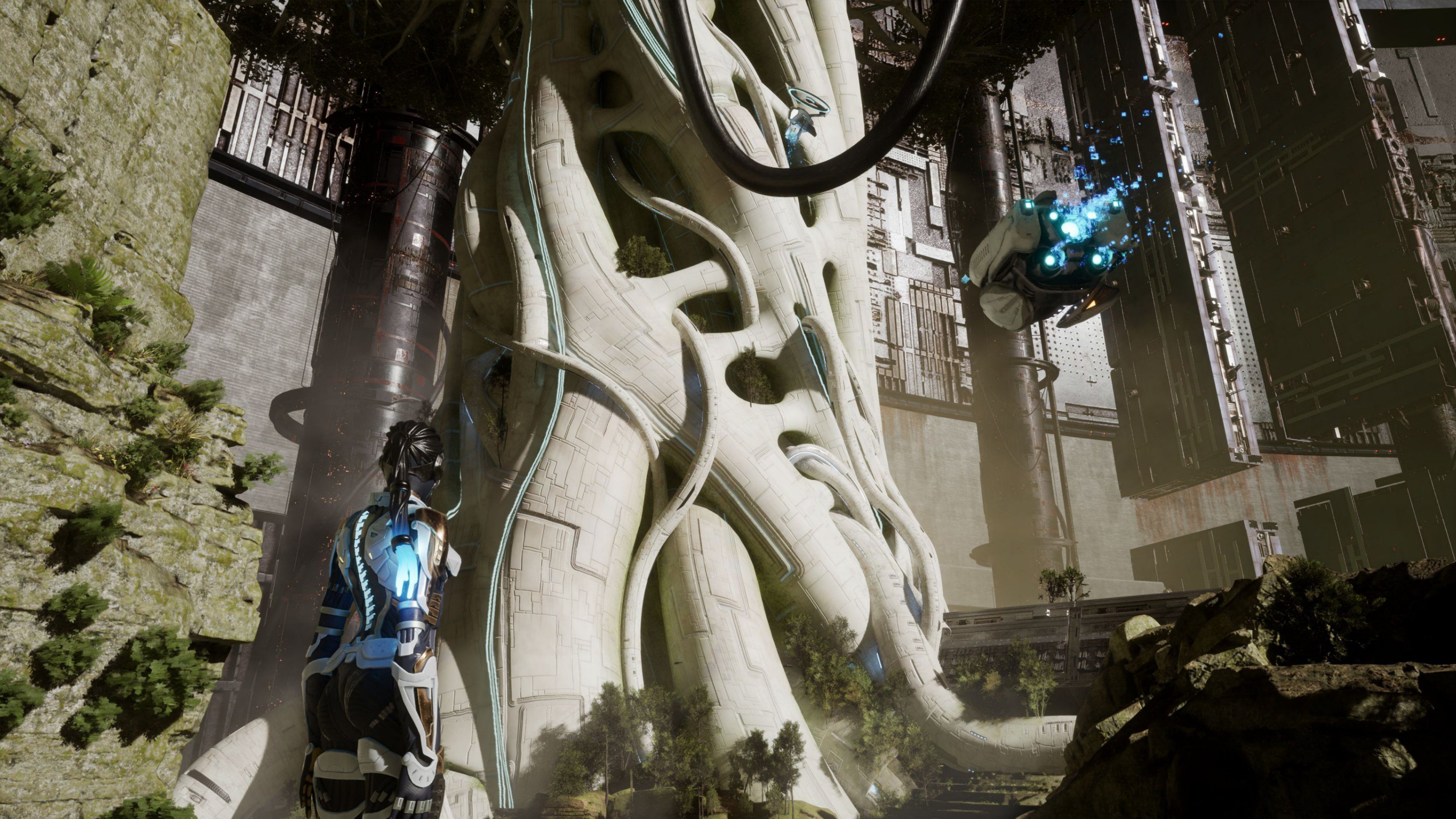
Gameplay Mechanics and Features
Steel Seed claims to offer variance in its gameplay, but this is a gross mischaracterization. In reality, the clumsy and disjointed combat mechanics will quickly push you toward a singular playstyle: stealth. Confronting your foes directly is a messy, unsatisfying affair that you will learn to avoid at all costs.
Even for die-hard fans of stealth titles, the experience here is a test of patience. The gameplay loop of sneaking past various enemy types grows stale over the considerable amount of time you’ll spend in each area. The progression system feels like busywork, and the encounters with formidable enemies become repetitive, making it difficult to recommend even to its target audience.
Stealth, Parkour, and Combat System
The core of the game is its stealth approach, but it brings nothing new to the table. You can crouch, use bait to lure enemies, and perform silent takedowns. If you have played any stealth game in the last decade, you will recognize these fundamentals immediately. The mechanics are functional but entirely uninspired, offering shallow engagement that quickly becomes predictable.
Interspersed between stealth sections are parkour sequences reminiscent of older Assassin’s Creed or Uncharted titles. Zoe’s movement is responsive enough, and these moments can provide a minute dose of satisfaction. However, they are rarely challenging and are often hampered by frustratingly inconsistent checkpointing that can erase significant progress after a single misstep.
Then there is the combat. It is, to put it bluntly, a mess. The lock-on system is buggy, attack animations are dry, and the controls feel mushy and unresponsive. Whether on Xbox Series X or any other platform, engaging in open combat is so abrasive that you will find yourself reloading a save rather than suffering through a fight. It feels less like a feature and more like a punishment.
Companion Dynamics and Skill Trees
Your companion drone, Koby, offers some utility beyond its flat personality. You can take control of the drone to scout areas, mark enemies, and even see their patrol paths. It can also be used to create distractions or deploy tools like mines, which are essential for navigating the more densely populated stealth sections.
The game features extensive skill trees for both combat and stealth, which at first glance seems promising. The system requires you to not only spend a currency but also complete specific gameplay challenges to unlock nodes. As critic Orpheus Joshua from Noisy Pixel notes, this is one of the game’s “most clever and gratifying features,” but its execution is deeply flawed.
The problem is that many of these challenges are tedious, forcing you to grind out specific kills or hunt for collectibles in bland environments. This convoluted progression system discourages you from experimenting and fails to let you meaningfully customize Zoe’s playstyle. Instead of feeling like a rewarding journey, unlocking skills often feels like a checklist of chores.
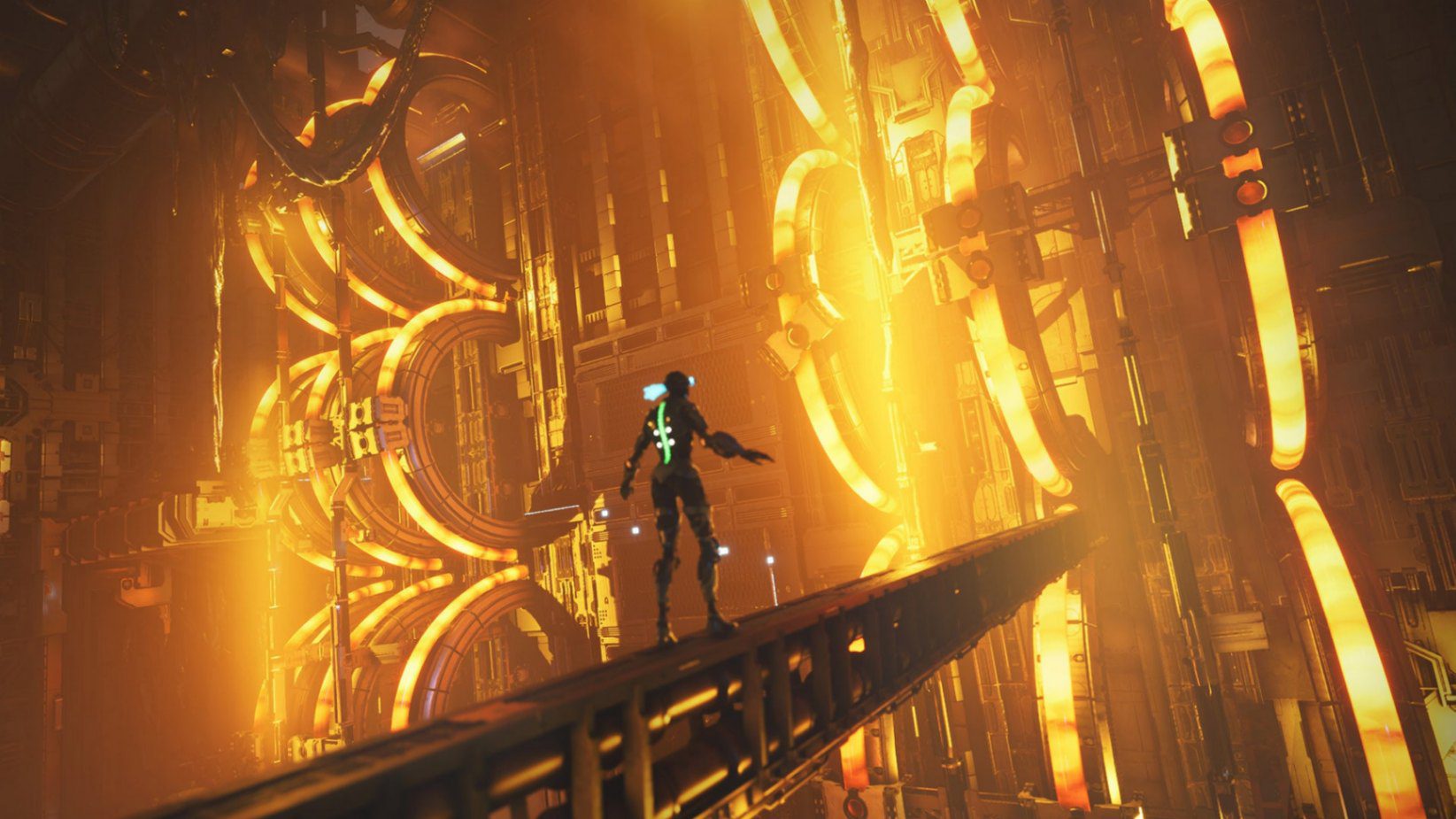
Visuals, Performance, and Audio Experience
Visually, Steel Seed is a mixed bag that leans toward underwhelming. The graphics and art style carry a generic “Double-A” aesthetic that lacks a distinct identity. The technical quality is also questionable, with performance on platforms like the PlayStation 5 fluctuating noticeably without the visual fidelity to justify it, feeling leagues behind a polished experience like Star Wars Jedi: Survivor.
The audio experience is just as inconsistent. The soundtrack is almost entirely forgettable, with many tense moments unfolding in baffling silence. To make matters worse, the English voice acting is often amateurish and contextually removed, completely breaking any sense of immersion the game tries to build.
Graphics, Art Style, and Technical Quality
The game’s art style can be summed up as uninspired. From the protagonist’s character model to the cyber-industrial backdrops, everything has a pervasive, generic look. You’ll traverse environments that feel cobbled together from every sci-fi game you’ve played before, resulting in a world that is visually competent but artistically hollow.
While there are moments where the scale of the hostile underground facility is impressive, these are fleeting. Any attempts at unique environmental storytelling are undermined by the bland art direction and, more problematically, the lighting. Some areas are stunningly realized, but many others are so dark that you can barely see, turning exploration into a frustrating process of trial and error.
On a technical level, the game disappoints. On the PlayStation 5, the frame rate struggles to stay locked at 60 FPS, with frequent dips that are noticeable and jarring. Given that the graphics are far from cutting-edge, this lack of polish is unacceptable and speaks to a poor state of optimization.
Soundtrack and Voice Acting Impact
A game’s soundtrack should enhance its atmosphere, but in Steel Seed, it is mostly absent. Long stretches of gameplay are accompanied by little more than the clang of Zoe’s footsteps or the whirring of machinery. The few musical tracks that do appear are so generic that they fade from memory the moment they end.
The English voice acting is perhaps the game’s greatest audio sin. Reviewer Kirkland Gray described the dialogue between Zoe and Koby as feeling “far too similar to vocal exchanges in the much-maligned title Forspoken.” [Source: https://player2.net.au/2025/04/steel-seed-review/] Zoe’s inexplicably quippy delivery feels completely out of place in a desolate world, and the line reads often sound amateurish and cringeworthy.
This poor performance completely saps the life out of any scene. The dynamic between Zoe and Koby, which should be the emotional core of the journey, is rendered dull and unbelievable by the flat delivery and weak script. The impact is so negative that some have resorted to switching the audio to a different language just to make the experience tolerable.
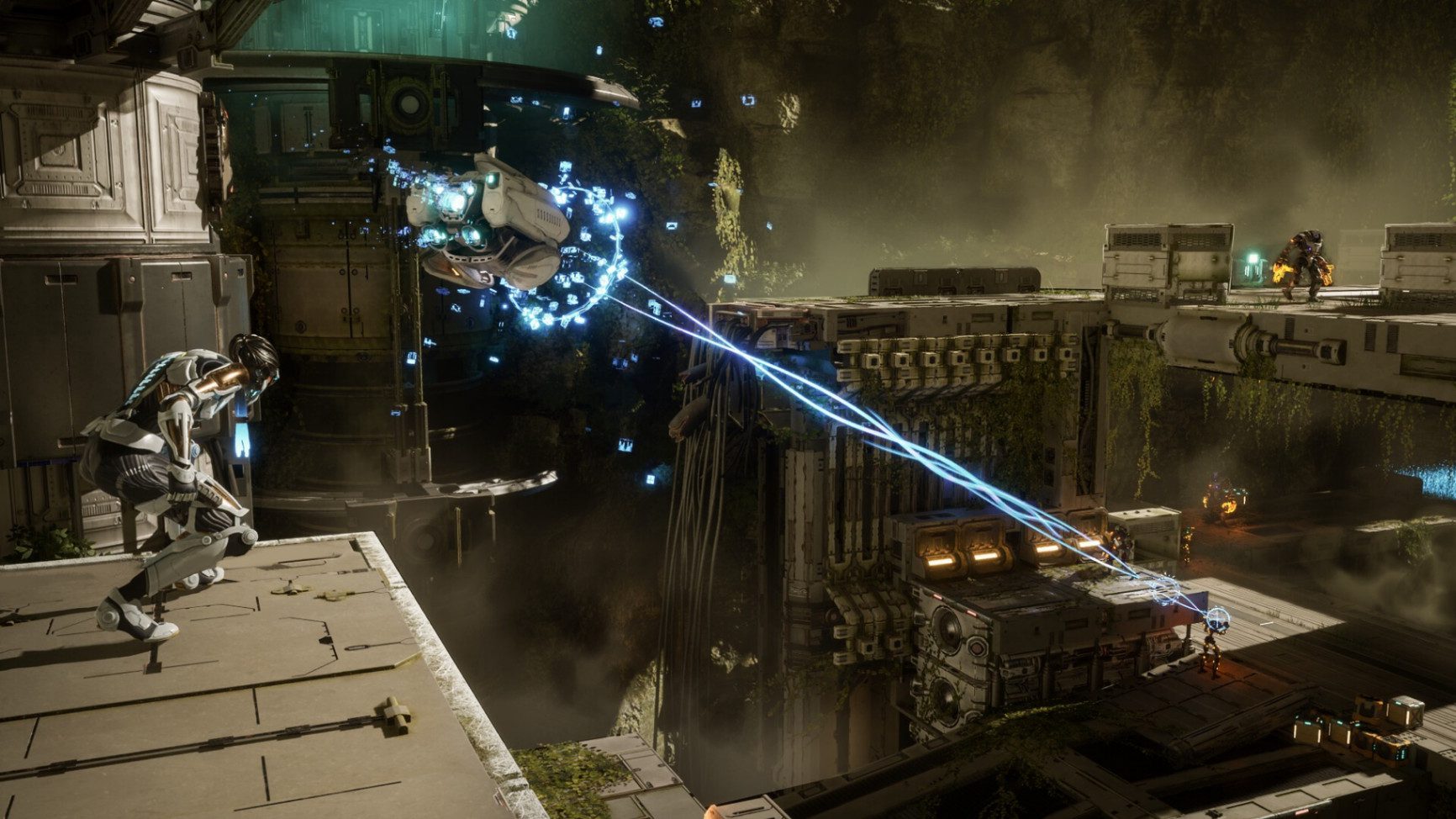
Player Reception and Critical Reviews
The critical reception for Steel Seed has been decidedly lukewarm, with most reviews landing in the mediocre 5-7 out of 10 range. The consensus is that the game is a collection of half-baked ideas that never coalesce into a satisfying whole. Player reception mirrors this sentiment, with many expressing frustration over the game’s many design flaws.
Critics seem to walk a fine line, acknowledging that there are interesting concepts at play but concluding that they are buried under layers of jank and tedium. The entire game feels like a missed opportunity, a title that could have been something special but is ultimately just another forgettable entry in a crowded genre.
Strengths and Common Praises
Even in the most critical reviews, a few glimmers of potential manage to shine through the rust. It seems that Steel Seed is not entirely without merit, though its strengths serve mostly to highlight what the game could have been.
These are the elements that have received some cautious praise, though they often come with significant caveats:
- Interesting Stealth Toolkit: For hardcore fans of stealth titles, the array of gadgets and abilities offers some room for creative takedowns.
- Serviceable Platforming: Traversal and parkour segments are generally responsive and can be satisfying in short bursts.
- Ambitious Scale: The game occasionally presents you with formidable enemies or environments of an impressive scale, creating moments of genuine awe.
- A Clever Skill Tree Concept: The idea behind the progression system, which ties unlocks to gameplay challenges, is clever in theory.
However, these praises are consistently undermined by the game’s overarching flaws. The good ideas are either underutilized or surrounded by so much frustrating design that they can’t save the experience on PlayStation or any other platform.
Weaknesses and Noted Criticisms
The list of weaknesses in Steel Seed is extensive and forms the basis of nearly every critical review. These issues permeate the entire game, turning what should be an exciting adventure into a monotonous and frustrating slog.
The most commonly cited criticisms include:
- Clunky and Unresponsive Combat: Direct combat is almost universally described as a janky, unsatisfying mess.
- Forgettable Narrative: The story is bland, the characters are poorly written, and the plot twists are predictable.
- Tedious Progression: The skill tree is locked behind frustrating challenges and collectible hunting.
- Repetitive Gameplay: You will spend an enormous amount of time repeating the same stealth loops against the same few various enemy types.
- Poor Checkpointing: Inconsistent and punishing checkpoints can erase significant progress, leading to extreme frustration.
- Lack of Polish: From performance issues to amateurish voice acting, the game feels unpolished.
These problems are not minor annoyances; they are fundamental flaws baked into the game’s core design, making it difficult to enjoy for any significant amount of time.
Editions, Bundles, and Purchase Options
If, after all these warnings, you are still considering a journey into this mediocre world, you should know what your purchase options are. The game is available digitally on PlayStation 5, Xbox Series X|S, and PC, so you have your choice of platforms on which to be disappointed.
There are no complex bundles or season passes to worry about, which is a small mercy. The offerings are straightforward, with a standard edition and a slightly more expensive deluxe edition. Don’t expect a wealth of content to choose from; the focus is squarely on the flawed base game.
Standard vs. Deluxe Edition Comparison
The purchase options for Steel Seed are simple. The standard edition gets you exactly what you’d expect: the base game and nothing more. This is the most direct way to experience the title’s many shortcomings.
The Deluxe Edition offers a little extra for a higher price point, typically including a digital artbook and the game’s soundtrack. Given that the art style is largely generic and the soundtrack is forgettable, you have to question whether these additions are worth your money.
Below is a simple breakdown of what each of the editions offers. As you can see, the deluxe version provides little of real value to enhance your experience on Xbox Series X or any other platform.
|
Feature |
Standard Edition |
Deluxe Edition |
|---|---|---|
|
Base Game |
Yes |
Yes |
|
Digital Artbook |
No |
Yes |
|
Digital Soundtrack |
No |
Yes |
|
Extra In-Game Cosmetics |
No |
Possibly included |
Bundles, Add-Ons, and Availability in the US
Beyond the Deluxe Edition, there are currently no other bundles or add-ons available for Steel Seed. The game launched as a complete, standalone product, with no announcements for post-launch content or expansions.
In the United States, availability is straightforward. You can purchase the game from the digital storefront for your preferred platform: the PlayStation Store for PS5, the Microsoft Store for Xbox Series X|S, and Steam for PC.
Do not waste your time looking for special pre-order bonuses or extensive DLC packs. The content you see is the content you get. This lack of additional content means your purchase decision rests solely on whether the flawed core experience is something you are willing to pay for.
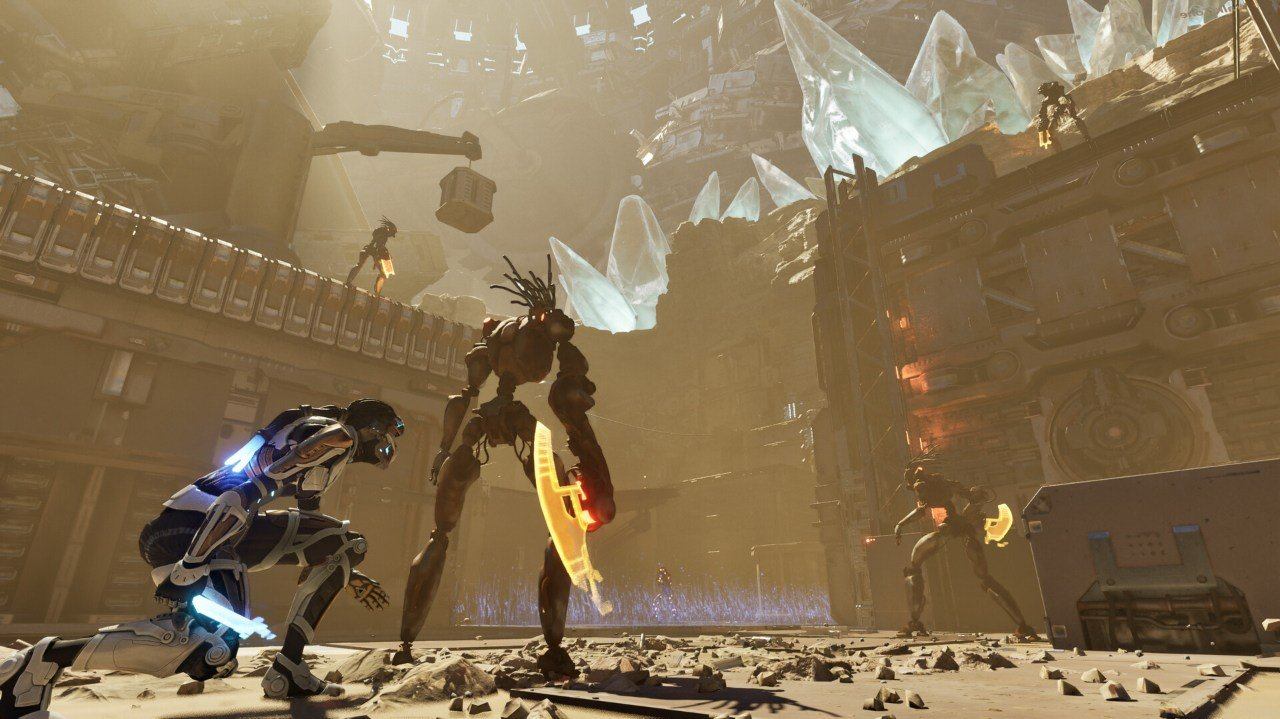
Conclusion
In conclusion, “Steel Seed” may offer a rich narrative and intriguing world, but it ultimately falters in delivering a cohesive gaming experience. The promising post-cataclysm setting and compelling characters like Zoe and Koby are overshadowed by gameplay mechanics that often feel clunky and unrefined. While some players may appreciate the stealth elements and visual aesthetics, the overall execution leaves much to be desired. For those seeking innovation in the stealth action genre, this game may not meet expectations. If you feel intrigued despite these criticisms, consider researching further or waiting for updates before diving into the world of “Steel Seed.”
Frequently Asked Questions
Is Steel Seed worth playing for fans of stealth action games?
It’s a tough recommendation. While the gameplay is built around stealth, its repetitive nature, punishing checkpoints, and the sheer amount of time required will test the patience of even the most dedicated fans of stealth titles. The core loop starring Zoe quickly becomes a frustrating and monotonous affair.
What platforms is Steel Seed available on in the United States?
Steel Seed is available digitally in the United States on PlayStation 5, Xbox Series X|S, and Windows PC. You can find it on the respective online stores for each platform. The purchase options are simple, with no complex bundles or add-ons to navigate.
Are there plans for DLCs or future updates for Steel Seed?
The developer has not announced any official plans for future DLCs or major content updates. Given the numerous issues with the progression systems and the uninspired narrative, it seems unlikely that add-on content will be released to expand or fix the entire game.
